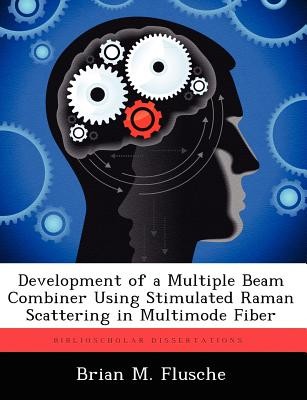
- We will send in 10–14 business days.
- Author: Brian M Flusche
- Publisher: BiblioScholar
- ISBN-10: 1249587174
- ISBN-13: 9781249587170
- Format: 18.9 x 24.6 x 0.4 cm, softcover
- Language: English
- SAVE -10% with code: EXTRA
Development of a Multiple Beam Combiner Using Stimulated Raman Scattering in Multimode Fiber (e-book) (used book) | bookbook.eu
Reviews
Description
Beam combination was demonstrated by splitting the beam from a diode pumped Q-switched Nd: YAG laser and pumping a multiple input, single output fiber squid. Beam cleanup of the resulting output beam using stimulated Raman scattering was then demonstrated in both 100 ?m fiber (Stokes M2 = 1.86) and 200 ?m fiber (Stokes M2 = 1.40). The performance of the 200 ?m fiber was compared to that of the 100 ?m fiber. Energy conversion efficiency into the Stokes beam was measured as a function of input energy and found to be limited by the attenuation characteristics of the fiber. When input energy was increased, the conversion efficiency of pump energy to Stokes energy decreased. In the 100 ?m fiber, the pump-to-Stokes conversion efficiency decreased from a high of 44% to a low of 16% as input pump energy increased. In the 200 ?m fiber, the pump-to-Stokes conversion efficiency decreased from a high of 19% to a low of 12% as input pump energy increased. For a given input pump energy, the 200 ?m fiber was more efficient than the 100 ?m fiber. Beam quality was measured via the M2 fit parameter as a function of input energy and was found to slightly degrade in both fibers as input energy increased. In addition, beam quality was measured as a function of 100 ?m fiber length and determined to degrade slightly (M2 lt; 2.5) at fiber lengths less than 400 m. Additional fiber length beyond 400 m did not improve beam quality and reduced output energy, although the Stokes threshold was reduced.
EXTRA 10 % discount with code: EXTRA
The promotion ends in 18d.17:57:12
The discount code is valid when purchasing from 10 €. Discounts do not stack.
- Author: Brian M Flusche
- Publisher: BiblioScholar
- ISBN-10: 1249587174
- ISBN-13: 9781249587170
- Format: 18.9 x 24.6 x 0.4 cm, softcover
- Language: English English
Beam combination was demonstrated by splitting the beam from a diode pumped Q-switched Nd: YAG laser and pumping a multiple input, single output fiber squid. Beam cleanup of the resulting output beam using stimulated Raman scattering was then demonstrated in both 100 ?m fiber (Stokes M2 = 1.86) and 200 ?m fiber (Stokes M2 = 1.40). The performance of the 200 ?m fiber was compared to that of the 100 ?m fiber. Energy conversion efficiency into the Stokes beam was measured as a function of input energy and found to be limited by the attenuation characteristics of the fiber. When input energy was increased, the conversion efficiency of pump energy to Stokes energy decreased. In the 100 ?m fiber, the pump-to-Stokes conversion efficiency decreased from a high of 44% to a low of 16% as input pump energy increased. In the 200 ?m fiber, the pump-to-Stokes conversion efficiency decreased from a high of 19% to a low of 12% as input pump energy increased. For a given input pump energy, the 200 ?m fiber was more efficient than the 100 ?m fiber. Beam quality was measured via the M2 fit parameter as a function of input energy and was found to slightly degrade in both fibers as input energy increased. In addition, beam quality was measured as a function of 100 ?m fiber length and determined to degrade slightly (M2 lt; 2.5) at fiber lengths less than 400 m. Additional fiber length beyond 400 m did not improve beam quality and reduced output energy, although the Stokes threshold was reduced.


Reviews